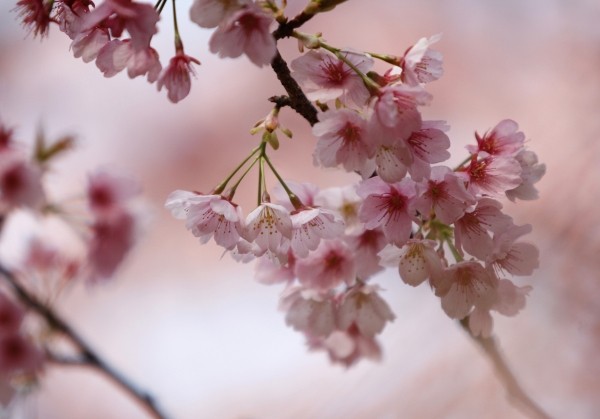
So Punxsutawney Phil was right? Six weeks after the prognosticating rodent saw his shadow, winter is finally over.
Well, the famous rodent might have nothing to do with the arrival of spring though. The first day of spring, or the Spring Equinox (Vernal Equinox), falls on 20 March, much to the delight of the Americans.
The feel-good factor about this day, however, is that the first official astrological day of spring hints that high temperatures are not far off. This will be good news for Americans, who will have a much-awaited relief from the spate of cold blasts seen in the recent weeks. Curiously enough, this day is also the UN-declared International Day of Happiness. So there must be something really good about this day to merit a celebration, right?
For those of us in the northern Hemisphere, the vernal equinox takes place in March. It is a day in which the sun's rays directly cross over the Earth's equator from the southern hemisphere to the northern hemisphere, slowly bringing the heat towards the north.
The sun shines directly on the equator only twice a year - March 20/21 and September 22/23. These days are known as the vernal (Spring) equinox and the autumnal (fall) equinox respectively.
This year, the vernal equinox takes place exactly at 13:57pm EDT in America. In India it will take place at 10:27pm.
Cultural Importance
Equinoxes - and solstices - have deep rooted cultural significance around the world, and they have been observed since time immemorial. One of the most famous ancient spring equinox celebrations was the Mayan sacrificial ritual near the main pyramid in Chichen Itza, Mexico.
In the Indian sub-continent and in Hindu astrology, the vernal equinox is known as Vasant Vishuva or Vasant Sampat. The Hindu equivalent of the day has, however, drifted apart and is celebrated on Mesha Sankranti, which falls on 14 April.
There are a few myths associated with this day. Here are a few of them:
1. The length of both day and night is equal
Well, not really. Though the fact is the day is, more or less, just as long as the night on the spring equinox, the exact equality between day and night takes place just before the vernal equinox, according to the National Geographic.
"Exactly when it happens depends on where you are located on the surface of the Earth," says Geoff Chester, a public affairs specialist with the Naval Observatory in Washington, DC.
2. The spring equinox falls on the same day every year
As we have discussed, this is not always the case. The reason is that Earth takes slightly more than 365 days to complete one revolution around the sun. However, the calendar rounds it up to 365 days and does not accout for the extra 0.256 days. So the March equinox may fall on 20 March for many years and occur on 21 March a later year.
3. Can you balance an egg on its end?
This is an age-old myth that does not hold any truth. Trying to balance an oval-shaped object on its end is no easier on the spring equinox than on any other day. There is no scientific way the Earth's axis could help stabilize the egg.
4. Can you balance a broomstick on its end?
This is another popular myth very similar to the egg one. Popular beliefs say that the broom can stand on its own on this day. Discovery News notes that the ability to balance a broom on its bristly end has nothing to do with the vernal equinox.














